SUMMARY
This is AI generated summarization, which may have errors. For context, always refer to the full article.
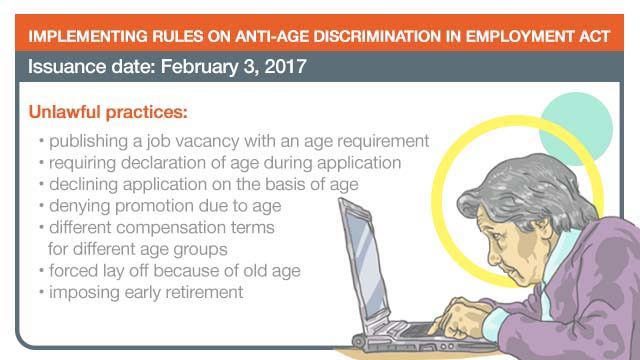
MANILA, Philippines – Income, tenure, health and safety at work, social protection – a wide range of issues besets the labor sector in the Philippines.
In 2017, the Department of Labor and Employment issued several orders to help address some of those problems.
Here are some of those directives that might just be useful to you:
Implementing Rules of the Anti-Age Discrimination in Employment Act
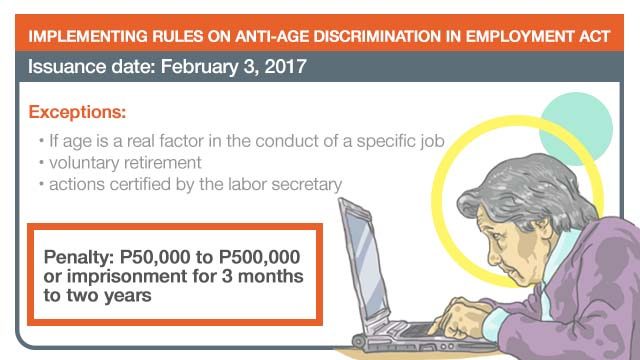
No high heels at work
DOLE Secretary Silvestre Bello III released this order following a demand from the Associated Labor Union last August.
It seemed to be a very simple and practical concern, but prolonged standing – especially when wearing an elevated footwear – poses a health risk.
The department’s Bureau of Working Conditions (BW) said that standing for a prolonged period while wearing high-heeled shoes causes pain, fatigue, numbness, and bloating in the legs of workers. A review by the University of Aberdeen also said there are a number of studies linking high-heeled shoes to risks of injury, postural problems, and bunion formation.
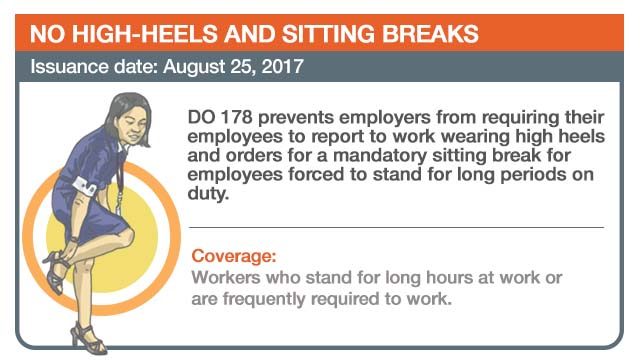
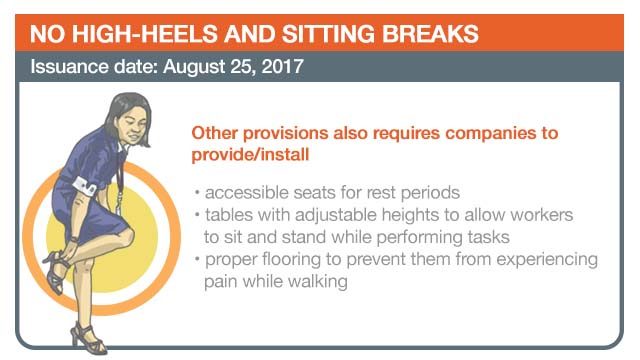
Mandatory standing breaks
After ordering employers to grant their employees sitting breaks, DOLE issued an order to provide those forced into a sedentary work environment be given standing breaks.
According to the BWC, work that involves long hours of sitting can cause musculoskeletal disorders, high blood pressure, heart disease, anxiety, diabetes, and obesity.
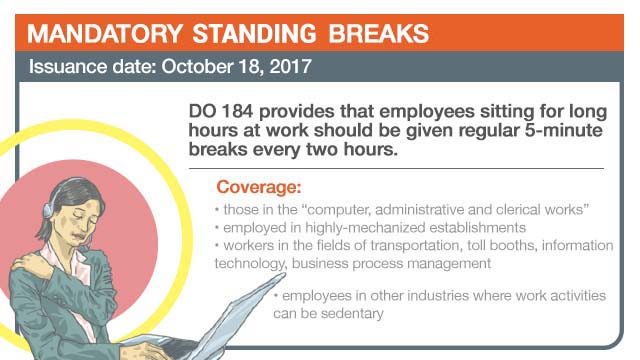
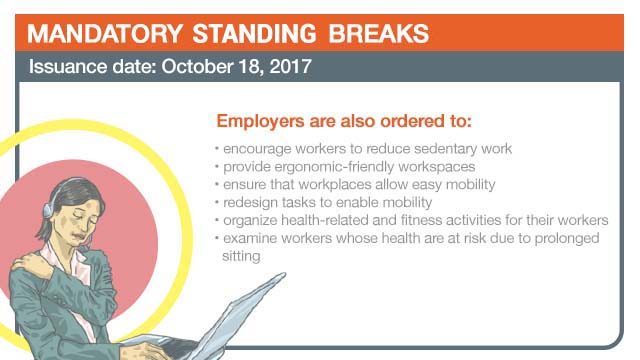
Limiting work hours of health workers
Employees of private hospitals often work almost 24/7, as they attend to unpredictable health emergencies. Department Order 182 prescribes that workers in this sector to work for only 8 hours in a day.

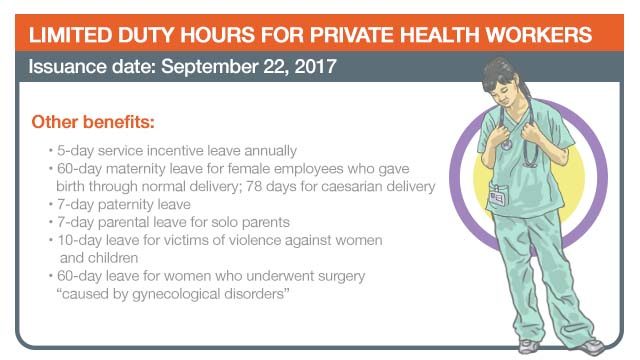
Ending child labor in agriculture
Early in January 2017, DOLE, together with the International Labor Organization and the Department of Social Welfare and Development, launched the campaign #1MBatangMalaya, which vows to free one million children engaged in forced labor by the year 2025.
DOLE then issued DO 149-A to further protect kids from hazardous labor. It sets stricter prohibitions on the kind of work minors can’t do in agriculture and livestock farming.
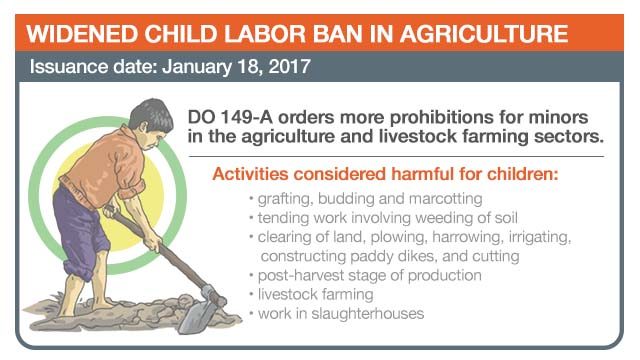
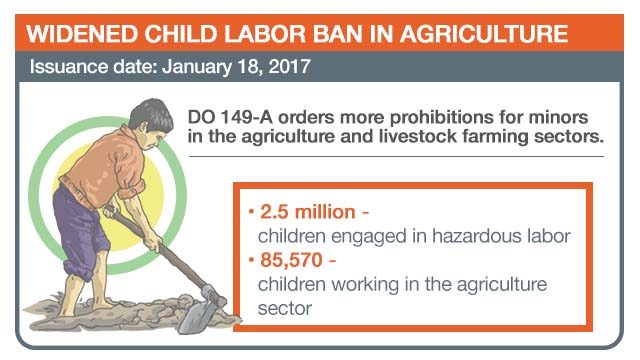
Wage orders
Local domestic workers in Metro Manila and 10 other regions received a wage increase that ranged from P500 to P1,000.
| Regions that increased pay for household service workers | Cities and 1st class municipalities | Other municipalities |
| Metro Manila | P3,500 | |
| Cordillera Administrative Region | P2,500 | P3,000 |
| Cagayan Region | P2,500 | P2,500 |
| Central Luzon | P4,000 | P3,000 |
| Mimaropa | P2,500 | P2,500 |
| Bicol Region | P3,000 | P2,500 |
| Western Visayas | P3,500 | P3,500 |
| Central Visayas | P3,000 | P2,500 |
| Northern Mindanao | P3,000 | P2,000 |
| Davao Region | P3,000 | P2,000 |
| Soccskargen | P2,500 | P2,000 |
| Source: National Wages and Productivity Commission | ||
Meanwhile, several Regional Tripartite Wages and Productivity Boards (RTWPB) also issued wage orders to increase the daily minimum wage of workers in non-agriculture and agriculture industries. The increase, however, only ranged from P10 to P25 per day.
Labor groups continue to clamor for the establishment of a national wage-setting mechanism and abolish RTWPBs. Bello earlier told labor unions the a working group has been created to study proposals to establish a national minimum wage. It is composed of representatives from labor unions and the National Wages and Productivity Commission.
The Philippines provides the highest minimum wage in Southeast Asia, but workers seek a bigger step-up. The Philippine Statistics Authority says a family of 5 requires at least P9,064 monthly or P390 daily to sustain them.
This amount may be enough for Metro Manila workers earning a minimum wage of P475 to P512 a day, but not for those in the regions who subsist on a daily wage of between P225 and P348.
Couple the poor wage increase with the lack of access to social protection – such as healthcare coverage and pension and huge incidence of work informality – there’s still much intervention needed to promote the welfare of Filipino workers.
DOLE should look into these in 2018. – Rappler.com
Add a comment
How does this make you feel?
There are no comments yet. Add your comment to start the conversation.